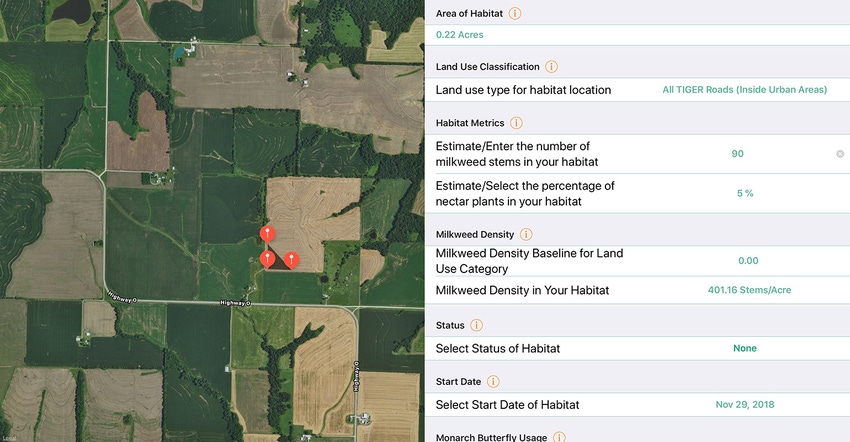April 16, 2019

Farmers and landowners invest in a lot of features and changes to improve the land they farm. One area that’s gained greater attention is putting land not used for farming to use in creating a safe space for pollinators. The next step may be sharing that investment news with others.
“HabiTally is a free mobile app that farmers can use to map their pollinator habitat,” says Linda Dudenhoeffer, business strategy, Bayer. “This app is being developed with The Climate Corporation and with Iowa State University.”
She explains that farmers can log their pollinator habitat in the system, and it would be shared in a cloud database that could be shared with the U.S. Fish and Wildlife Service. “This would be information shared at the county level, not at the farm level,” Dudenhoeffer says. “We’ll maintain farm anonymity, and we plan to roll the app out this spring.”
What’s the benefit of sharing your pollinator information with this app? It turns out in 2019, the U.S. Fish and Wildlife Service will decide whether to propose monarch butterflies be listed under the Endangered Species Act. That move could severely limit farming areas and what can be done, if there’s not enough evidence of farmer investment in pollinator spaces.
For farmers who’ve placed pollinator spaces on their farms —and for no matter what program — logging that information in the app will help share that farmers are already doing their part.
Using the app
You can download the mobile application from the Apple App store — it’s an iOS app only. Locate your farm on the map provided. Simply drop pins to show where you’ve installed the pollinator habitat, and then use the dropdown menu to provide more information about what work you’ve done.
The app can help you track milkweed plants you’ve got in the area, and it will automatically calculate the size of the habitat based on the pins you drop. Users can also log whether they’ve seen monarchs in the habitat.
Bayer points out in a brochure about the app that monarch habitats benefit other pollinators and small animals. Data collected through the app can help inform decisions regarding conservation and protection in the future.
Monarchs are under pressure, and a range of groups are calling for greater protection. This information can help balance the conversation for agriculture and protect the butterflies, too.
About the Author(s)
You May Also Like






